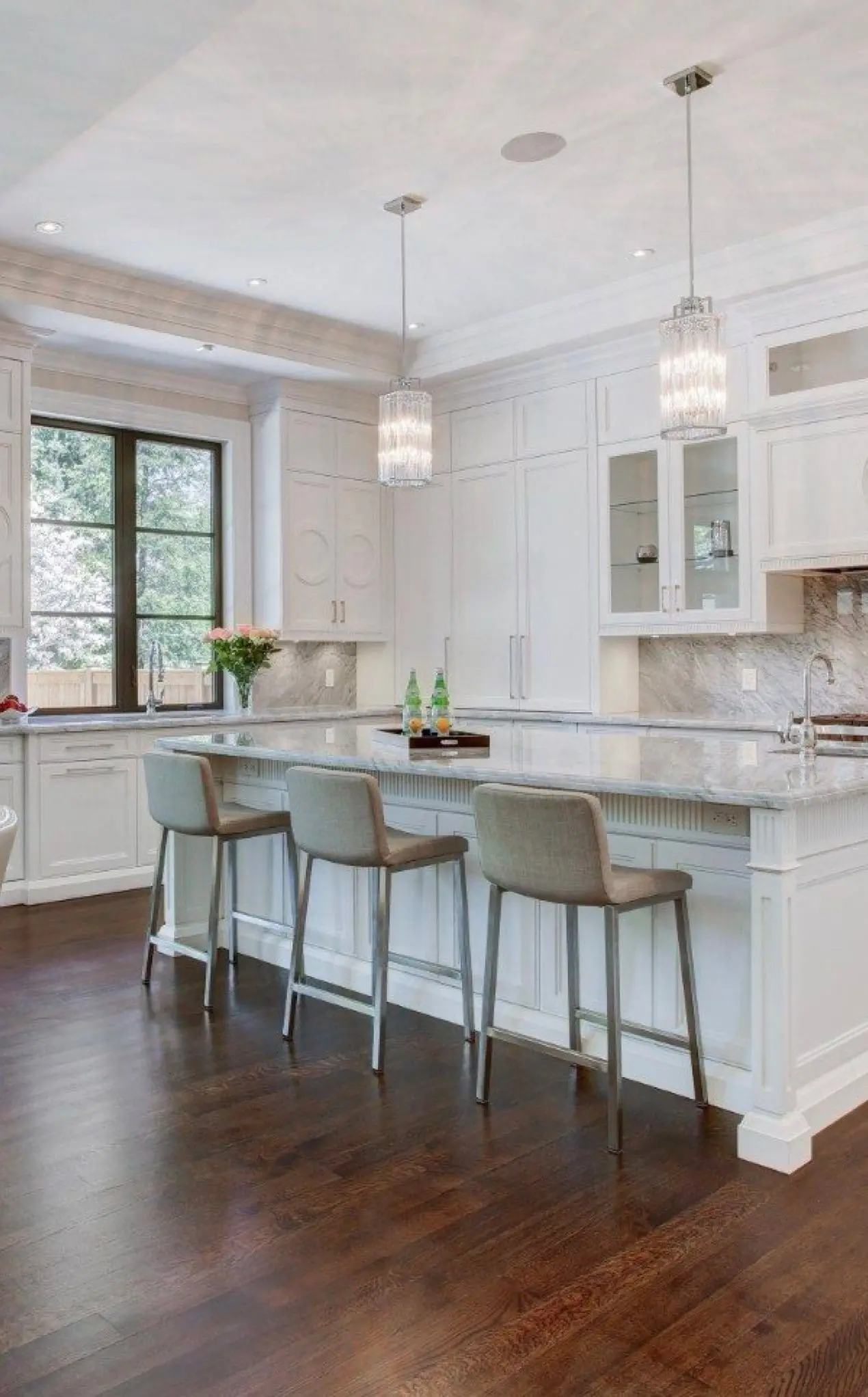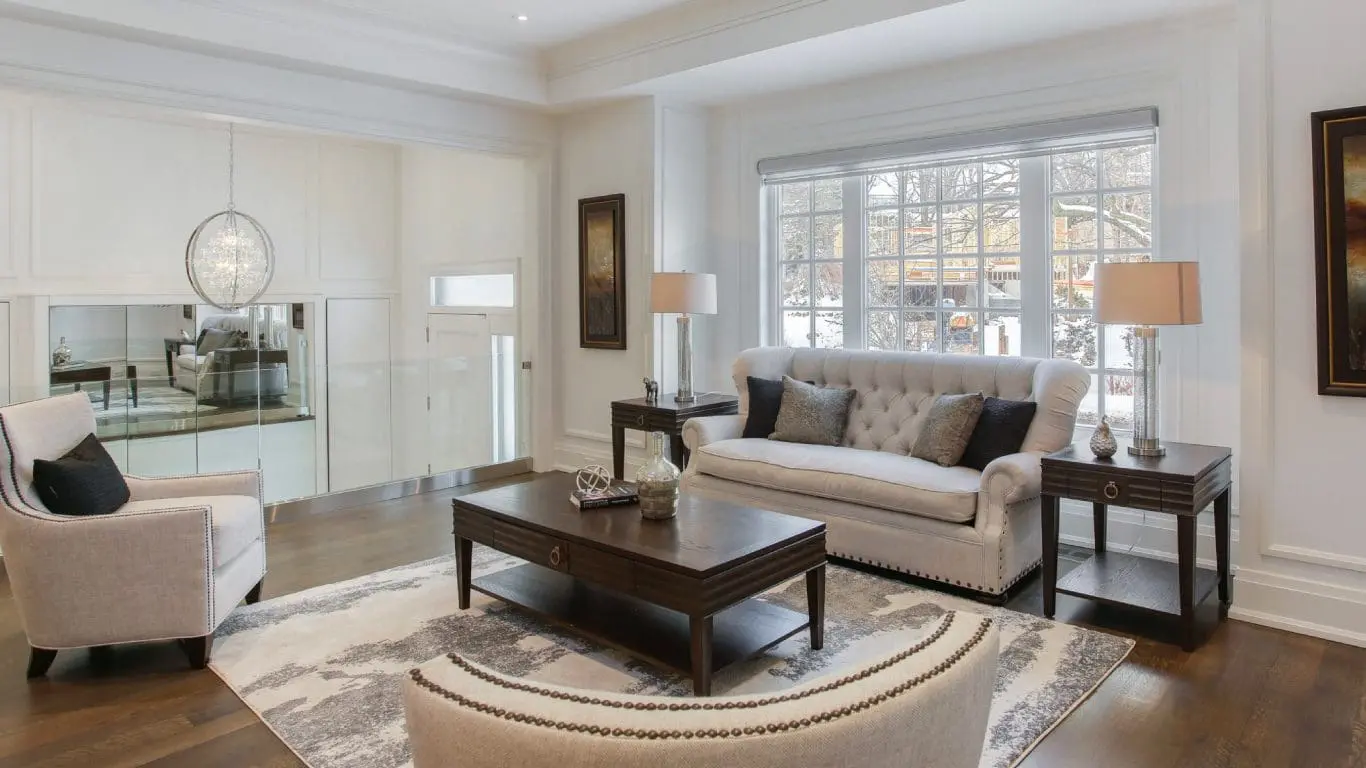Introduction
Building a custom home in Toronto offers many advantages over buying an existing house. With a custom build, you can create the exact home you want, tailored to your needs, lifestyle, and preferences. The process allows you to select the perfect lot, design the ideal layout, pick your finishes, and incorporate special features. While building new construction requires significant upfront planning, the result is your dream home, built just for you.
Some key benefits of building custom in Toronto include:
- Customized design: You can work with an architect to design the perfect home for your family, reflecting your aesthetic and how you want to live and entertain. This allows you to maximize and tailor every square foot.
- High-quality materials: With new construction, you dictate the quality of finishes and can select higher-end materials like hardwood flooring, granite countertops, high-end appliances and fixtures.
- Energy efficiency: New builds allow you to incorporate the latest energy-efficient building practices, HVAC systems, insulation, windows, and doors. This saves on utility bills.
- Custom lot: You can choose the perfect lot size, location, and orientation to maximize sunlight, views, privacy, and more.
- New home warranty: A new custom build typically comes with a comprehensive warranty to protect against defects and give you peace of mind.
- Equity & value: Although a higher upfront investment, custom homes often have higher resale value than existing homes in Toronto and build immediate equity.
The process of building custom involves planning, design, permits, construction, and finishing – but the rewards are well worth it. This guide will walk through each step to build your dream home in Toronto from the ground up.
Determine Your Needs
Before starting the process of building a custom home in Toronto, the first step is to determine your lifestyle needs and aesthetic preferences. This will establish the foundation for the design process and ensure the final home aligns with your wishes.
Consider the number of bedrooms and bathrooms needed based on your family size or plans. Think about how you use your current home and what you wish you had more or less of. Focus on the functionality of the spaces and how they connect to support your lifestyle.
Define your aesthetic style preferences. Browse magazines or Pinterest for inspiration on architectural styles you are drawn to. Collect images of room designs, features, colors, textures, and materials you like. This visual inspiration will help communicate your style to the architect.
Establish your budget upfront. Building custom can allow more control over finishes and features, but can also come with a higher price tag. Outline needs versus wants and define budget priorities to help guide trade-offs. Get informed estimates of the cost per square foot for building in your area.
Think about other special features you’d like built-in. This may include things like a home theater, wine cellar, fireplace, spa bathroom, home office, workshop, or garage. Include features that suit your hobbies and interests.
Clearly defining these needs from the start will allow you to get the most out of the custom design process and ensure your dream home becomes a reality. Discussing lifestyle priorities with the architect and builder from day one sets the stage for success.
Choose a Lot
Choosing the right lot is one of the most important steps when building a custom home. You’ll want to thoroughly research potential locations and select a lot that meets your needs. Consider the following:
Location – Look at neighborhoods and areas that appeal to your lifestyle. Be mindful of the commute to work, proximity to schools, access to amenities, and surrounding community. Drive around at different times to get a feel for traffic and noise.
Permits & Regulations – Learn about zoning laws, permit requirements, setback restrictions, and building codes for your desired lots. This will determine what you can build. Meet with the planning department to discuss any limitations.
Size – Make sure the lot provides enough space for your ideal home size and layout. Account for future additions or upgrades too. Larger lots typically offer more privacy as well.
Terrain – Look at topography and grading. Steep lots often require more complex foundations. Flat lots may need drainage. Inspect the soil quality as well.
Access – Consider driveway length, existence of curbs and sidewalks, and street parking. Corner lots and cul-de-sacs can ease access.
Utilities – Verify all necessary utilities (water, sewer, electric, gas) are available and properly serviced. Underground lines are preferable.
Other Factors – Analyze sun exposure, views, noise levels, foliage, fences, and orientation on the lot. Also, have the land surveyed to confirm exact boundaries.
Taking the time to thoroughly evaluate potential lots will help you select the optimal location to build your dream home. Compromising on the lot to save money could limit what you can build.
Hire an Architect
Choosing the right architect is one of the most important decisions when building a custom home. You’ll want to find an experienced residential architect who is familiar with the Toronto building codes and permitting process. Look for architects who have designed homes in Toronto and can provide examples of their previous work.
Meet with a few architects before deciding. Discuss your vision, lifestyle needs, aesthetic preferences, and budget. A good architect will listen to your ideas and ask questions to fully understand your goals. Share inspiration photos, your must-have features, and anything you definitely don’t want in the home design.
The architect will create initial sketches to bring your vision to life. They’ll advise on layouts, materials, construction methods, and other technical considerations based on your lot and needs. Expect to go through several rounds of revisions before finalizing the house plans. This collaborative design process allows you to provide feedback to get plans you’re excited about.
Once the final design is approved, the architect will create permit-ready blueprints and work with the city to obtain necessary approvals. Their familiarity with Toronto building codes ensures your custom home meets local requirements. Hiring the right architect provides immense value for bringing your dream home to reality.
Finalize House Plans
Your house plans define how your home will actually look and function—they contain detailed drawings and specifications for everything from layout to windows, flooring, cabinetry, lighting fixtures, and more. This is where you’ll work closely with your architect to finalize all aspects of the design.
- Provide detailed input to the architect on how you envision the layout and flow of spaces. Think carefully about how your family will use the home day-to-day.
- Make material selections for flooring, countertops, tile, paint colors, cabinetry, hardware, lighting fixtures, and all interior finishes. Your choices here bring personality and aesthetics to the home.
- Choose exterior finishes like siding, trim, windows, doors, and roofing materials. Consider how the home will complement the neighborhood.
- Work with your architect to determine the positioning and sizes of windows and doors. This impacts aesthetics, views, lighting, and energy efficiency.
- Finalize the kitchen design including appliances, cabinetry, sinks, faucets, and other features. This is often the heart of a home.
- Settle on bathroom designs including tubs/showers, vanities, toilets, fixtures, and storage. Make them functional and comfortable.
- Develop the landscape plan including patios, decks, walkways, plantings, and other exterior elements. They expand your living space.
- Specify any custom built-ins, storage solutions, and organizational features throughout the home.
- Select smart home technology like security systems, audio/visual, lighting controls.
- Confirm that the plans meet all zoning requirements and building codes for your municipality. The architect will handle this.
Take time to think through details, but avoid endlessly tweaking. Your architect will guide you to make decisions that result in a cohesive, livable home you’ll enjoy for years.
Get Permits
Once your house plans are finalized, you’ll need to apply for all required building permits from the city planning department. This is an important step, as permits ensure your home complies with zoning and building codes.
The main permits you’ll likely need in Toronto include:
- Building permit – Required for new construction and additions. This covers structural, electrical, plumbing, and HVAC work. Submit house plans, applications, and fees to get approved.
- Demolition permit – If demolishing an existing home on the lot to build new one. You’ll need surveys and hazardous material assessments.
- Grading and drainage permit – For any grading changes or drainage work on the property.
- Driveway permit – To construct a new driveway or widen your existing one.
- Tree removal permit – If removing mature trees on the property. You may need an arborist report.
The city will review your permit applications and plans to ensure they meet codes and zoning rules. Some common requirements include minimum basement heights, fire separation walls, energy efficiency, and more. The permitting process can take 4-6 weeks.
Many homeowners hire expediters to help get permits faster by persistently following up with the city. Just make sure your plans are complete before submitting them. Delays in getting permits approved can set your whole construction schedule back.
Select a Builder
Selecting the right builder is one of the most important decisions when building a custom home. Take the time to thoroughly research and vet local builders who specialize in custom homes.
Begin by asking friends, neighbors, and coworkers for referrals to builders they have worked with and would recommend. Search online directories and read reviews of builders online. Look for members of local builder associations and those who have won industry awards.
Narrow down your list to 3-5 reputable custom home builders in Toronto and schedule in-person consultations with each. Prepare a list of questions and discuss your building plans in detail. Get a sense of their communication style, expertise, and experience with similar projects.
Request at least 3 competitive bids for your project. Compare the bids in detail – the scoped work, allowances, fees, timeline, warranty. Do not make a selection solely based on the lowest cost. Weigh factors like experience, referrals, professionalism, and who seems like the best fit.
Vet the final candidates thoroughly before signing a contract. Ask for and check references from other custom home clients. Review examples of their work and visit completed projects first-hand. Confirm they are licensed, insured, and bonded. Doing diligent research now avoids headaches during the build.
Select a builder you feel confident will architect and build your dream home properly. Make sure you have a detailed contract in place clearly outlining the full scope of work, timeline, change order process, and more. Your builder will be your partner throughout the construction process so choose one you trust and communicate well with.
Why consider building a custom home in Toronto? Here are more articles:
- The Role of Art and Design in Homes: Elevating Luxury Properties in Toronto
- Attracting Discerning Buyers: Selling Luxury New Builds in Toronto
- 22 Hillhurst Boulevard Luxury New Built Home In Midtown Toronto
Begin Construction
Once permits are approved and a contract is signed, construction on your new custom home will begin. This is when you’ll start to see your dream home come to life. The general contractor will oversee each phase of construction. Here’s what to expect during this exciting time:
Site Preparation
Before construction begins, the lot needs to be prepared. This includes clearing vegetation, grading the land, installing utilities, and excavating for the foundation. Depending on the lot, additional site work like adding retaining walls or drainage may be required.
Foundation
The foundation is the first major part of the home to be constructed. Forms will be built, steel reinforced, and concrete poured to create the home’s foundation. Inspections will take place to ensure proper strength and compliance with building codes.
Framing
Framing gives shape and structure to the home. The builder will construct the skeletal framework with wood or steel beams and columns. Floors, walls, and roof framing will take place during this phase. Expect regular inspections of the framing by the building inspector.
Rough Ins
Rough ins involve installing the major systems including plumbing, HVAC, and electrical. With the walls open during framing, plumbers and electricians can run pipes, wires, and ductwork throughout the home. Inspectors will check for proper installation and safety.
Roofing
Once framing is complete, it’s time to add the roof. Roof trusses will be lifted into place and roofing material like asphalt shingles or tile will be installed on top. Flashing, gutters, and vents will also be added to direct water away from the home.
Exterior Finishes
At this point, the home’s exterior will start to take shape. Exterior walls will be insulated and covered with materials like siding, brick, or stucco. Windows and exterior doors will also be installed. The driveway, walkways, and any decking will be added as well.
With each milestone, be sure to visit the site and inspect progress. Ask questions and request any clarification from the builder or subcontractors. Staying involved will help the project stay on track and prevent any misunderstandings.
Interior Finishes
Choosing the interior finishes is one of the most exciting parts of building a custom home. This is when you select materials and finishes that reflect your personal style and make the house truly feel like home. Here are some of the main interior finish decisions to make:
Cabinets
For the kitchen, bathrooms, laundry room, and any built-ins, take time to explore different cabinet styles, woods, stains, and hardware options. Stock, semi-custom, and full custom cabinets offer a range of quality, customization, and price points. Think about your aesthetic preferences and how you intend to use the spaces.
Countertops
Granite, quartz, marble, butcher block, laminate, and more – countertop materials range widely in looks, durability, and cost. Visit showrooms to see slabs in person and get quotes. Measure precisely to determine how much surface area you need.
Flooring
Evaluate carpet, hardwood, tile, vinyl, and other flooring types room-by-room. How will the space be used? Do you prefer a cohesive look or distinctive areas? Check out showroom displays, product samples, and photos online to find inspiring flooring ideas. Consider maintenance and costs, but also make choices you’ll enjoy living with.
Paint Colors
Color can transform the look and feel of a space. Be bold or subtle, uniform or varied. Many companies offer free paint samples so you can test colors on walls before deciding. Pay attention to undertones and lighting. Work with paint experts to identify hues that suit your style.
Lighting Fixtures
Carefully choose lighting fixtures room-by-room to create the right ambiance. Assess lighting needs for tasks versus atmosphere. Select finish and style options that align with your overall aesthetic. Mix fixture types like flush mounts, pendants, chandeliers, sconces, and recessed lighting.
The interior finishes you select for your new custom home should distinctly reflect who you are. Take your time, do your research, and enjoy putting your personal stamp on the materials, colors, textures, and more.
Completion & Move-in
The final stage of building your custom home is completion and move-in. This exciting time involves final inspections, landscaping, creating a moving plan, and celebrating your finished home.
Final Inspections
Once construction is finished, the city will conduct final inspections of plumbing, HVAC, and electrical systems as well as the overall structure. They will ensure your home meets all building codes and is safe to occupy. Make sure to be present during inspections to address any issues on the spot.
Landscaping
With the structure complete, it’s time to landscape and beautify your property. Develop a plan that includes trees, shrubs, lighting, fencing, patios, and any water features. A landscape architect can help design spaces that match your taste and lifestyle. Install irrigation, build planter beds, lay sod, and add finishing touches like mulch and edging.
Moving Plan
Create a detailed moving plan with tasks assigned to family members or a moving company. Plot the layout at your new home and decide what items go where. Sort possessions ahead of time into “keep,” “donate,” and “trash” piles. Clean the old home, then strategically move belongings in phases – fragile items and essentials first, less critical items last.
Celebrate Your Home
Congratulations, your custom dream home is complete! Celebrate this milestone with a housewarming party. Show off your new space by giving tours. Once settled in, make memories with friends and family in your personalized oasis. This home was built just for you – enjoy!
Do you need guidance in choosing a neighbourhood to settle down in? I am happy to help you analyze schools and select an option that meets your needs, budget, and other important aspects. Reach out 647-294-3039 or by email at olena@agentolena.com for more information.












